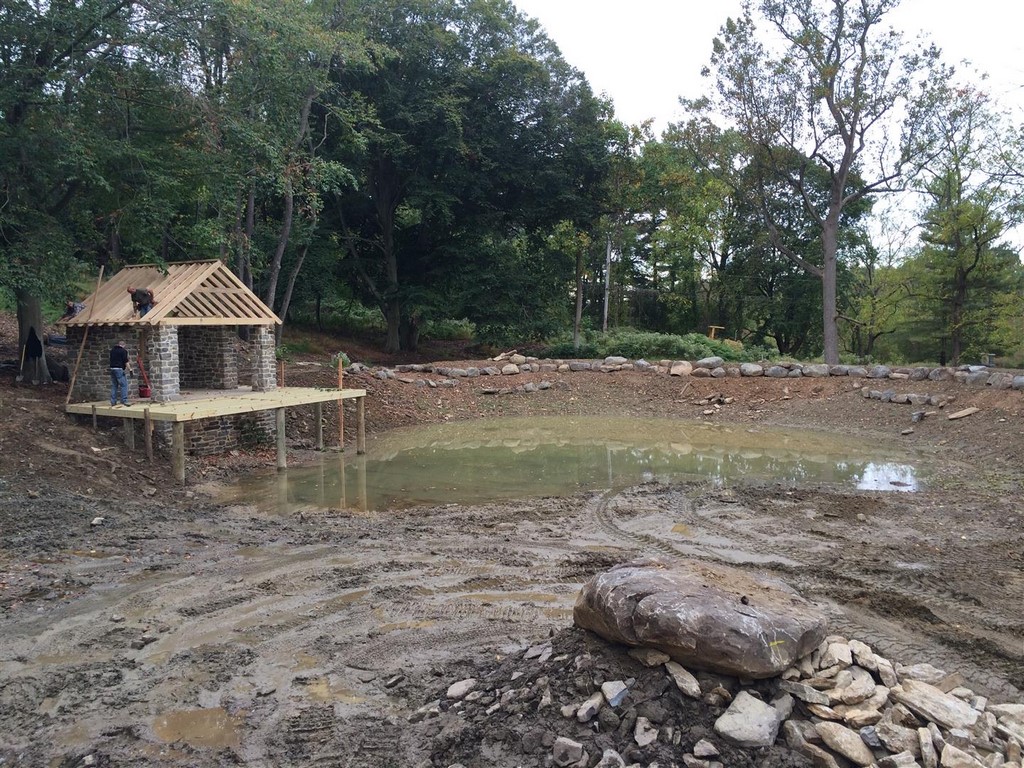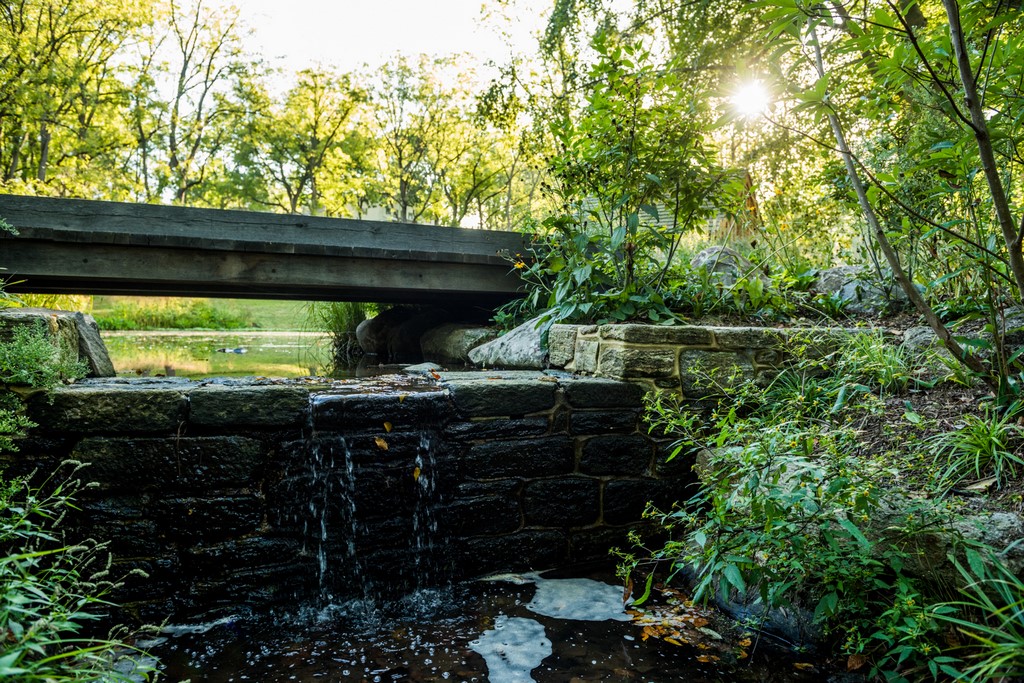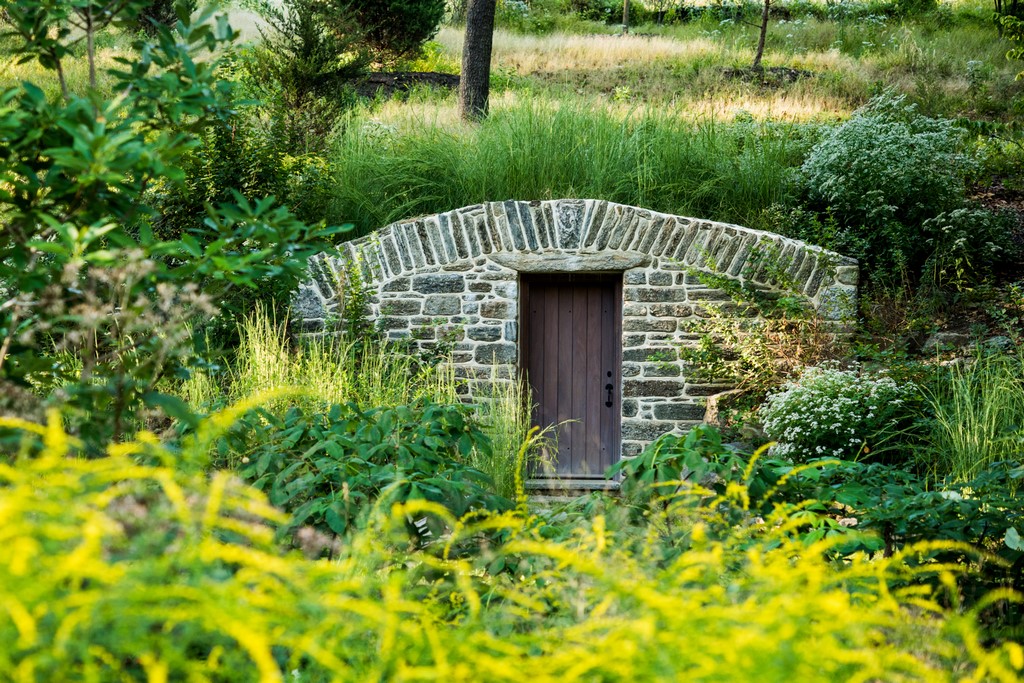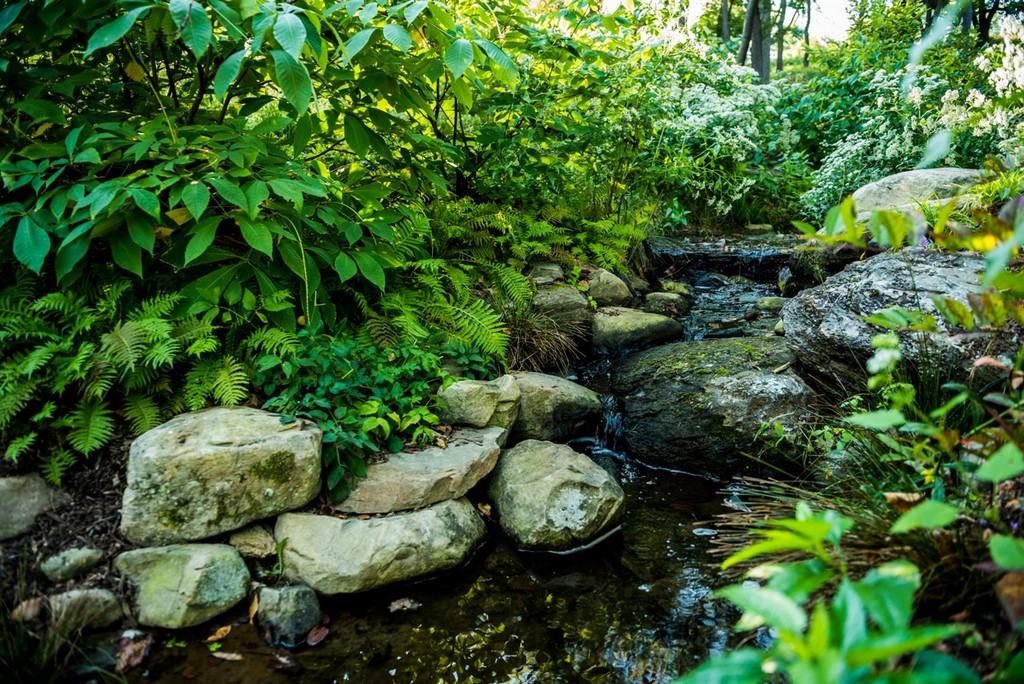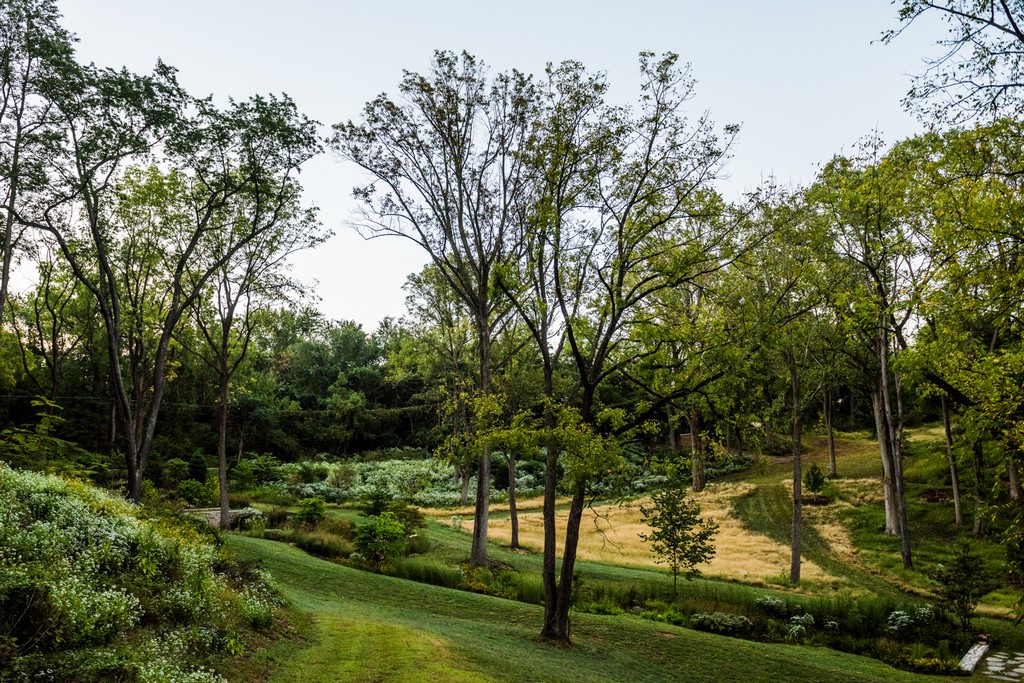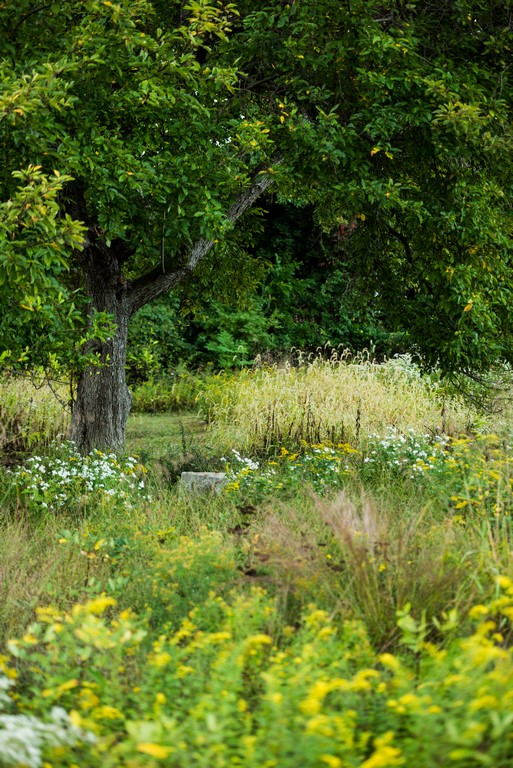Urban Renewal
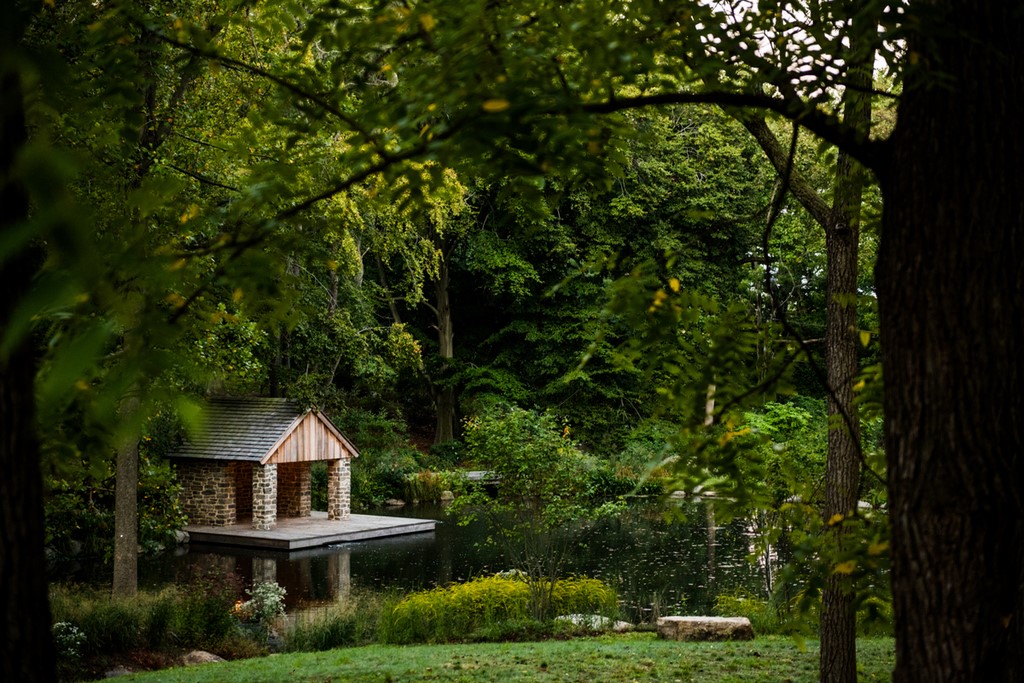
What we have here is essentially three stories rolled into one.
Partly, it’s about what happens when a well-established company steps beyond its comfort zone with a major renovation project that involves an unusually large set of unknowns. It’s also about what can happen to a property when an old, large, man-made pond system breaks down, time passes and the space reverts to a wild, natural state. And it’s about what’s involved in pulling a failed watershape apart, figuring out what’s needed and restoring it in such a way that it aligns a client’s memories of a childhood spent growing up on the property.
Swept all together, it’s a story about accepting big challenges and the necessity of having the confidence required to know you can make things work – despite the intimidating realities of the site and all of the questions you can never fully answer with a project like this one until you dig in and actually get to work.
LOST IN TIME
The property we were called to is located in southeastern Pennsylvania, within Philadelphia’s city limits. In fact, it’s only 11 miles from the heart of the downtown district, but it has a bucolic character that makes the city seem light years away.
The home – a farmhouse, actually – isn’t terribly old by local standards, probably dating to the middle of the 19th Century. It’s clad in stucco and features three stories of living space, notched gable ends and pedimented wall dormers. The property also includes some newer brick buildings with lower profiles; they apparently date to the 1950s.
The overall parcel covers 11 acres, which is quite large for anything so close to a major urban core. But the estate was much larger at one time: Bits and pieces had been sold off through the years as the city grew up around it, and the fact that it survives with so much size is attributable to the fact that, three generations ago, the family patriarch who bought the place also purchased some of the adjoining properties.
The current owner’s father was a doctor who ran his practice out of the farmhouse. It was he who created the pond in roughly the same location as today’s watershape when he decided it would be fitting for the property to have one. His name was Jack; he loved the property and acted as its steward for his entire life. His son dubbed the watershape “Jack’s Pond” in his honor – a detail we confirmed by installing a dedication stone to record that fact.
| By the time we arrived on site, the pond and its surroundings had spent many years reverting to a wild state. The pond had silted up (left), the springhouse had broken down to its foundations (middle left), the eroded stream had been choked by intrusive roots and plants (middle right) and the entire area had been taken over by grasses, ferns, shrubs and Black Walnut trees (right). |
The client’s property manager was the one who found us by occasionally looking in on a project we were tackling about three miles away. Our company, Hess Landscape Architects (Lansdale, Pa.), specializes in creating exterior spaces that complement and marry architecture with the natural environment. The client himself spends most of his time overseas, but his property manager had been tracking (and apparently admiring) the improvements we had made nearby through years of our ongoing relationship with those other clients.
One day he stopped by while we were on site and spoke with us; we met with him on the property a few weeks later, then met the owner shortly thereafter. He’d had a long, profound relationship with the property, man and boy, and his memories of what it was like there when he was a child helped inform his current thinking. But the doctor’s office had closed long ago, farming had ceased and, through the course of many years, the pasture had slowly slipped into a process of ecosystem succession.
By the time we arrived, volunteer Black Walnut trees had taken hold and dominated the landscape. In addition, more and more adjoining estates had been subdivided, placing a new set of urban-development pressures on the property – including increased velocities of stormwater runoff, decreasing surface water quality and the appearance of invasive and/or exotic plant species. As significant, wildlife displacement had led to patterns of persistent encroachment and overpopulation: Given its substantial watering hole, the estate had become something of a refuge.
All of these factors contributed to escalating damage of the stream corridor, predisposing it to further flooding and erosion. Massive accumulations of silt were deposited across the pond, gradually altering its shoreline shape and choking out aquatic life of any consequence. Our task was to reverse the damage and return the property to its halcyon days.
SIZING THINGS UP
Although the client came to the project filled with his memories, we enjoyed a fair amount of autonomy with the design work. The fact that he lived overseas full time meant that our face-to-face communications on site were rare. The property manager was there, of course, and provided us with feedback as things moved along; for the most part, however, we were free to let the land and existing features guide us.
One of the site’s main features is that the pond had always been fed by an Artesian well – an amazing dynamo that flows year ’round at a rate of at least five gallons per minute. In days long past, it had been used as a source of drinking water by local farms and families. Although the current water quality is not quite what it was, some people are still willing to drink it.
It’s very cold water, which is something of a puzzle because the site’s geology does not correspond with a deep underground water source. Knowing this, we approached it with great caution as we worked in its vicinity: Given its shallow source, we were concerned that if we changed too much in that area, the flow rate would diminish – or be diverted to another location or even stop completely. So we did as little as possible to disturb things and kept our fingers crossed as we moved along.
| Once we’d diverted the stream around the work area, we dredged away tons of silt, debris and additional soil from the pond, defining a new shape and establishing its banks (left). We also studied the diversion pipe from the headwall back, basically because we had no way of telling what was going on without digging (middle). Ultimately, we excavated through to a point where the original pipe was salvageable (right). |
This was only one of the issues we faced: As was mentioned at the start of the article, there were several features of the project that pushed us beyond our comfort zone.
First, we knew that the pond was an addition to the property rather than a naturally occurring water system, and it was tough to tell from surface examination exactly what was going on beneath the waterline and around the perimeter. What this meant was that the process would be largely improvisational – dictated by what we found on site rather than by anything we might devise ahead of time at the drawing board.
Second, the existence of the Artesian well, as noted above, forced us to proceed in a more gingerly fashion than we might have wanted. It would have been relatively easy to bring in huge machines and clear away the muck, debris and mire in a hurry. Instead, we had to proceed with a certain level of caution, making the process more like an archeological dig than a typical dredging or excavation.
Third, the site had incredible potential. As landscape architects and professional watershapers, we wanted to help the space express its best potential and knew, given the unknowns, that we had to be at our absolute best. It was a sensitive, memory-filled space as well, and satisfying our client’s expectations required absolute focus on our parts.
MAKING HEADWAY
Once we’d pulled the appropriate permits, we went to work on site, starting with the pond.
Our first task involved rerouting the stream for the duration of pond construction, after which we dredged the area and removing huge amounts of accumulated spoils. So we were in deep, right away, using large machinery and creating our biggest single site disturbance while constantly worrying about the flow of water from the Artesian spring.
Although this was by no means a methodical archeological dig, we did have to stop every once in a while because we kept finding things (some expected, others not) as we moved along. We knew where the original springhouse had been, for example, and, as expected, found the remaining rubble from its foundations. But we also found a large quantity of broken glass – some of it thick, some of it in interesting colors, all of it fairly old-looking and weathered.
| After we repaired the diversion system, we were able to install a liner into a new, stabilized channel and rebuild the stream (left and middle). We also took the opportunity to restore the springhouse to its original location – but on a new and more secure foundation (right). |
As we learned, the high-quality springs on the property had been renowned locally long before the farmhouse or pond had been here, and apparently there were more than a few locals who had been either careless or clumsy enough to drop their containers while collecting water for home use.
With the pond area cleared away and under construction, we turned our attention to the stream system. In doing so, we needed a fresh approach, because, as originally structured, this waterway had failed and caused the pond to edge its way toward ruin. We knew from the start that we’d have to make fairly drastic modifications to reduce the fluvial velocity of the stream: That is what had ultimately destroyed the existing channel.
It was somewhat helpful that this issue had been recognized (but not adequately addressed) long ago: Years before we became involved, a water-diversion system had been installed to allow incoming stream water to bypass the pond. The intent was to redirect water generated by high-volume events to avoid the pond while still allowing unencumbered baseline flows and water turnover.
| Even with a project of this scope and scale, the details truly matter. The site plan gives a general idea of the layout (top left), but a walk through the completed site tells a much deeper story, from the rustic trough into which the Artesian spring flows (top middle left) to the multiple pedestrian bridges (middle right and right), one of which spans the spillway leading out of the pond (bottom left). We also added a root cellar – and made it large enough to include the necessary pond equipment (bottom right). |
We knew the pipe existed, but we were quite surprised to find that it was still mostly functional. Upon inspection, in fact, we found that only a small portion of it needed to be replaced. In rapid order, we made it whole again and put it back into service to decrease storm-related pollutant loading and sedimentation in the pond itself. It wasn’t the solution, but it was nonetheless a big help.
For all that, the stream was not what could be called a static design element. In approaching it, we needed to respond to what we encountered and observed on site. Of course we had plans and drawings, but we knew that this type of work in general – and our specific work on this particular stream – was a matter of regular (if not daily) field review and in-process adjustments and changes.
Once we completed our work on the pond and stream – and, happily, learned that our intrusion had done nothing to disrupt the steady flow from the Artesian well – we turned our attention to the landscape. Although these pursuits came one after the other, we never separated them: The design was fully integrated and, as we worked with the watershapes, we were mindful of what was to come and created openings in which we’d eventually include plants and other landscape details.
LOCAL ECOLOGY
Our planting plans were developed to identify site-specific native plants that would thrive in these precise conditions: Aquatic, obligate, facultative and upland species were all specified in corresponding zones of expected inundation.
Sustainability was of significant importance on every level. For instance, native rushes we found growing near the stream banks were reused on site: They had been identified and collected before we reshaped the watercourses, transplanted to an on-site “nursery” and subsequently replanted at appropriate locations.
|
Rock Solid Sustainability was so important a part of this project that it even extended to stone selection. But the rocks we used weren’t sourced on site, nor were they brought in from local quarries. In fact, the schist we used for all of the walls and pond-related buildings was actually recycled from a nearby demolished church – so it was local stone and had been quarried nearby. As we learned, this material had commonly been used in the construction of older buildings throughout the area. It was simply good luck that enabled us to double down on the sustainability front and use stone that was not only local, but recycled as well. — S.C. |
Plant maintenance practices were part of perpetuating our sustainability goals: Seeds collected from the plant material were set aside for scattering or sowing to provide for new generations of greenery.
As was suggested above, the landscape had reverted to a more or less “natural” state and through the years had become a significant refuge for the local wildlife population – particularly deer. In modern, enclosed properties, we’re spoiled by the variety of plant material we are able to use. But here, with so deer around, many plants quickly fell off the candidate list.
Given the need, we spent a good bit of time in our searching and found some plants from well outside the list of “usual suspects.” But our particular deer proved to be quite voracious: Even the so-called “deer-resistant” species we used were, in some cases, stripped clean almost immediately. In fact, the site proved to us that there’s really no such thing as a deer-proof plant: Some are more resistant than others, but plant success ultimately depends on how hungry the deer might be on any given day.
To prepare for the handoff to the client’s maintenance staff, we prepared a detailed maintenance manual covering all aspects of the project, from basic water and fish maintenance to the care and feeding of the plants. This was relatively simple to do, because the project, from start to finish, took about four years: We’d been around long enough to see things through several seasonal cycles and unusual weather events and were able to pass along a rich trove of observations.
| Close to a bustling modern metropolis but reminiscent of distant times and places, the new stream system is a vision in rocks, water and plants from the rebuilt headwall (top left) all the way over to the revamped pond (top middle left and top middle right) – waterfalls included (top right). But it was always about more than the water: The entire 11-acre site has been updated and rejuvenated, with a beautiful stream valley (bottom left) and amazing, bucolic views across new meadows and the pond (bottom middle and bottom right). |
Throughout this lengthy process, we were assisted by many different trades and companies who operated under our project management and supervision. In all, 15 different subcontractors worked on site during that long span, including landscapers, arborists, aquatic scientists, dredging and bulk land-forming contractors, stream and boulder-work contractors, carpenters and stone masons.
As the work drew to a close late in 2015 – just in time for the owner’s nephew to hold his wedding rehearsal dinner near the water’s edge – we were still tweaking the landscaping and trying to keep up with the deer. But meeting this deadline was trivial compared to some of the other issues we’d faced, especially in figuring out how to control the stream in such a way that it wouldn’t further trouble the pond with heavy runoff and sedimentation.
Technical issues aside, it was hugely satisfying that the client was pleased by what we’d done – and it didn’t hurt when he asked us to continue working with him on a major addition to the farmhouse and its detached garage. And the fish were happy, too, safe and sound in their clearer, cleaner, healthier and much larger new home.
Scott Christie is a designer at Hess Landscape Architects in Lansdale, Pa. A 1994 graduate of Cornell University’s Landscape Architecture program, he started with the firm in 2009 after working for other design/build firms and is a specialist in developing and executing planting programs as well as project documentation and marketing. Recently, he was recognized for his involvement with community-funded dune-restoration projects in Avalon, N.J. For more information, visit www.hessla.com.




















